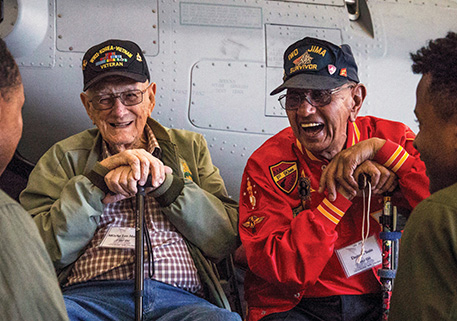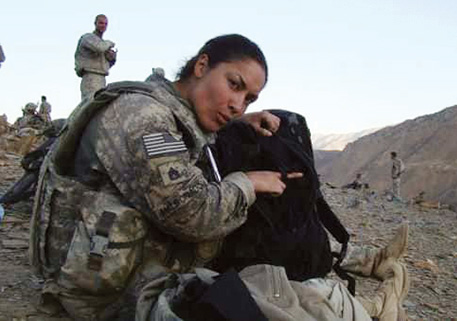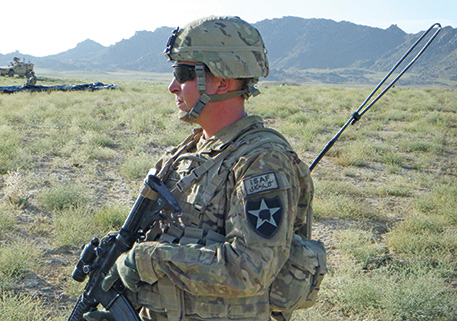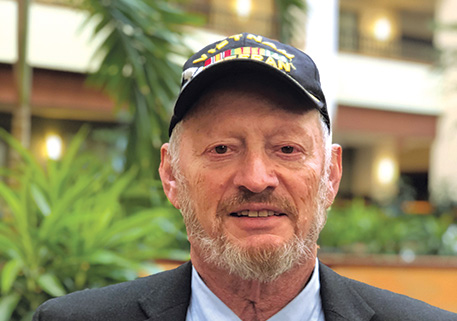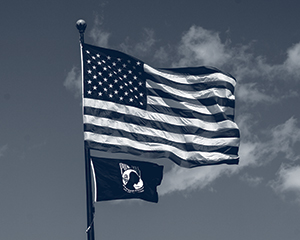 Army veteran, DAV member honors brother still missing from Vietnam
Army veteran, DAV member honors brother still missing from Vietnam
Army Pfc. David Lovegren was killed just 20 days shy of his 20th birthday in March 1969, when the UH-1 Iroquois helicopter he was riding in crashed in Vietnam. A recovery team quickly found his remains, but as they hoisted him aboard the extraction aircraft, there was an equipment malfunction and his body fell back to the ground.
Although additional efforts were made to re-locate and recover his remains, enemy movement on the ground made searching treacherous, and the gut-wrenching decision was made to cease recovery operations. Today, David Lovegren is listed as KIA-BNR—killed in action, body not recovered. He’s just one of the more than 1,500 American service members considered still missing from the Vietnam War.
His brother and fellow soldier, Dick Lovegren, pieced together the final moments of his late brother’s life, and the ill-fated recovery mission, after receiving firsthand accounts from those with David.
“I’ve talked to all of the guys that were there the day this accident happened,” said Lovegren, a DAV life member of Chapter 10 in Oregon and former member of DAV’s Interim POW/MIA Committee. “I have the maps, and I even have photos of the helicopter that dropped David.”
According to Lovegren, the aircraft was heading toward the Laotian border, where intelligence reports indicated Viet Cong troops would traverse. David’s unit was sent to block a nearby mountaintop when the chopper began tumbling down. All of the soldiers, except for the pilots, were thrown from the aircraft.
“I’d talked to the guy who found my brother, and [David] had some minor burning on his legs,” said Lovegren. “[David] was thrown against a boulder, which instantly broke his neck. They found David face down, chest up.”
The youngest of five brothers, Dick remembers David, the eldest, coming home after graduating from military training at Fort Lewis, Washington.
“I was so young—seventh grade,” recalls Lovegren. “I didn’t really keep up with conversations that were going around. It was just good to see him.”
David came home to Oregon to visit one last time before going to Vietnam.
Lovegren, who served in the Army for 12 years following David’s death, has been an active advocate for others with a relative missing from the battlefield. His unique perspective was valuable when he sat on DAV’s Interim POW/MIA Committee.
The United States is unique as the only country in the world that does everything possible to bring all of our missing and fallen troops back home. The Defense POW/MIA Accounting Agency (DPAA)—the arm of the Pentagon that searches for, identifies and repatriates remains of Americans from conflicts stretching back to World War II—has agreements with 46 nations.
“It’s truly a global mission,” said Johnie Webb, deputy director of outreach and communications at DPAA.
Recovery options have been restricted globally due to COVID-19, said Webb. But because of the close partnerships the United States has with nations where American service members are still missing, such as South Korea and Vietnam, recoveries didn’t wholly cease.
“Interestingly enough, with South Korea, there is a sister organization that’s developed on the model of our agency to recover,” added Webb. “And we’ve worked with Vietnam, going back to 1985, so they’ve become very good, very proficient at doing these recovery operations themselves.”
DAV’s Interim POW/MIA Committee members regularly attend teleconferences with DPAA officials and offer input on critical decisions involving POW/MIA search and identification. One area where DAV offered insight in recent years was encouraging DPAA to disinter all of the unknown graves at Honolulu’s National Memorial Cemetery of the Pacific—also known as the Punchbowl Cemetery—which has held the remains of the USS Oklahoma, a battleship that sank during the Japanese attack on Pearl Harbor on Dec. 7, 1941.
“We felt like it was important to stick to the fullest accounting possible—whether that’s Pfc. Lovegren or the remains in the Tomb of the Unknown,” said Vincent Darcangelo, the committee chairman. “The Punchbowl will remain hallowed ground, but from our perspective, the mission isn’t complete until each of our fallen is recovered.”
The remains of those 394 sailors and Marines who died during the opening hours of World War II were too damaged to be identified and were ultimately buried in 1950 at Punchbowl. Thanks to modern identification techniques, DPAA recently announced the identification of 338 individuals from the USS Oklahoma. In a news release in June, the agency said the accounting “represents the first successful completion of a project of such scope and complexity.”
For many, this mission is about the closure—though Lovegren said that some in his family would never find closure after more than 50 years since David’s death.
“Some don’t really want to express their feelings about it,” he said. “My mom has had enough of it over the last 50 years, but I know the guy that found him, and I know the guy that put him in the body bag, and I know they dropped his body in the jungle.
“That’s enough closure for me,” said Lovegren.


